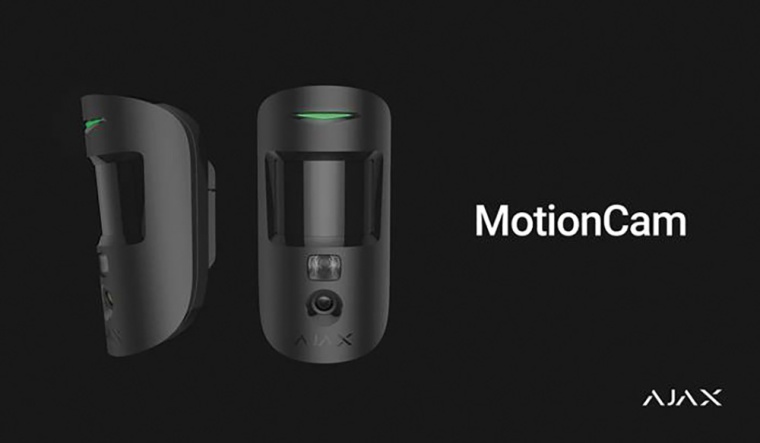Intrusion Detection: Photo Alarm Verification
Each time home security system is triggered, there is a large chance for it to be just a false alarm, and if such alarm is not verified as false in short time, there is a high probability the emergency responders get to the place to see nothing happened. Not only such situations are embarrassing for everyone involved, they are also costly and overall troublesome.

According to the research conducted by the U.S. Community Oriented Policing Services, approximately 94-98 percent of all alarms are false. For instance, false alarms in the UK cost around £1 billion annually, according to the reports by the Fire Industry Association. Moreover, given than 80 percent of false alarms are triggered by 20 percent of alarm systems, the police and emergency responders spend much of their time away from the actual crime locations (Fennelly, 2016). At the same time, it is not only the communities or security companies that bear costs and suffer penalties, but the home owners are generally also fined for the police discharge due to a false alarm. The fine fee increases with each false alarm discharge to reach as high as £180-450 per alarm in some countries. Besides, in the UK, there are two levels of police response to security alarms, which are Level 1 – immediate response, and Level 3 – no police response. In case of three false calls, the Level 1 security system might be downgraded to Level3 for a 12-month period.
The problem of false alarms is nothing new in the security systems market having gained the attention of security systems engineers and professionals as long as even fifteen years ago. Wells (2005) in his guide to digital home technology integration reasonably concludes that there is no universal way to entirely prevent false alarms, especially when they are triggered by the innocent sources like pets, children, and alike. Still, according to the statistics provided by the False Alarm Reduction Association (FARA), more than 80% of all false security alarms are due to user error, which might be prevented. Hence, apart from using the most reliable security equipment and its correct installation, several additional solutions to how reduce false alarms in general and the cases of response to such alarms in particular might be outlined:
Alarm verification by two or more detector triggerings within a short timeframe: though such alarm verification removes the false triggering of one detector it still does not protect against the users’ errors. In certain cases, verification might take some time and this is another serious implication of such approach. According to FBI, the typical timeframe of burglary is between 90 seconds and 12 minutes what means that every minute for response counts. In the UK this issue becomes particularly pending, as Mueller (2019) explains in his article for the New York Times that due to the budget cuts the police forces are shrinking having less officers to respond to alarms what extends the response time even without double or triple trigger verification. Given that one burglary is committed every 1.5 minutes in the EU with the number going up to 1000 burglaries per day in some Member States, according to the Europol data, such multiple alarm verification is not the optimal option for home security systems.
Alarm video verification: such type of verification is another attempt of the monitoring and security systems companies to reduce the probability of false alarms. The motion detectors installed with security systems are used together with cameras that allow checking what has triggered the alarm, yet such solution comes with significant compromises. First of all, such surveillance system is costly to install and maintain due to the low battery life, complicated configuration of the DVR cameras systems, cloud data recording, and the general facility infrastructure. Even though such challenges might be reasonable for the clients seeking higher control over their security systems and property and for commercial properties, video verification may still raise privacy concerns of neighbours who will not be happy with the idea to live under the constant video surveillance.
Alarm photo verification: this solution is to a certain extent similar to video verification, yet alarm verification is made by checking the photos from the motion detectors’ cameras. Such verification is enabled by the special security equipment with the option of visual verification, which is the next generation of motion sensor equipment. Such security system equipment grants a dramatic improvement to the conventional security systems though without a dramatic raise of installation and maintenance costs. Though in some systems it is possible to take a photo by request, the majority of detectors only take photos when triggered by a motion to raise alarm. This significantly reduces privacy concerns and makes such solution one of the most relevant and optimal to address the false alarms verification issue. Apart from these evident benefits, photo verification equipment generally does not require security system reconfiguration what reduces the cost, the time, and the effort of installation and maintenance.
Alarm photo verification is not a new story as it roots back to the post World War II period when the issue of home security became particularly pending. The video surveillance technology was invented in 1940s yet it was not until the 1970s that it was adopted for the home security purposes. In fact, while being called “video surveillance” the early model of such technology used a video camera that was taking low-quality grainy images and transmitting them to the stationary television monitor installed in a separate room. It was equipped with control panel that allowed activating an alarm and sending it to the central station with guards to come to the residence in case of need.
Naturally, the new generations of photo verification systems are more exquisite, efficient, and productive. The latest solutions available today are the best choice to enhance your property protection due to the range of high-value features making them faster and more reliable in raising and identifying a true alarm:
Speed: Photo detectors raise alarm in a split second after a motion detected and less than 10 seconds are needed to verify the alarm to see if it is true or false. This is significantly faster when compared to video surveillance alarm verification through several triggerings.
Quality of photos: The modern photo verification systems generate high-quality images that not only allow detecting a person in security area but also make it possible to identify such a person. Besides, by sending a series of photos to the monitoring company, such equipment allows tracing the events after the alarm triggering.
Reliability: the new systems are based on radio protocols and use radio channels to transmit signals and photos instead of exiting Wi-Fi network at the facility. This ensures both the rapid photo delivery and the lower probability of loss of connection.
Large distance of wireless connection: while the older photo verification alarm systems used wired connection and hence were based on equipment with receiver range up to several hundred meters, the new wireless motion detectors might be set up at a distance of more than 1500 meters away from the central panel. This permits using one system to monitor a multi-storey building or several facilities simultaneously.
Autonomy and long service life: due to the innovative detector battery improvements, the new photo alarm verification systems are autonomous and operate up to 4 years on the pre-installed battery. This reduces the time and cost of service maintenance for both the company and the client.
Easy system upgrade: some of the new photo verification solutions do not require a complete re-installation of security system with only a motion detector and a central panel replacement needed to upgrade. Again, a great deal to save time and costs while enhancing your home monitoring and security.
As it follows from the detailed review of the existing options to minimise the probability of false alarms, neither of them provides the 100% guarantee. However, the systems with photo verification still might be considered the optimal choice in terms of their cost and value. Easy to install and not expensive to maintain, the new photo verification equipment allows taking high resolution photos after the alarm triggering, sending them in a matter of several seconds, what ensures a rapid and effective response in the case of a real burglary. At the same time, such systems do not entail any privacy concerns for the neighbours and have longer battery life when compared to the more complex video alarm verification.
The Author: Aleksandr Konotopskyi, CEO of Ajax Systems














